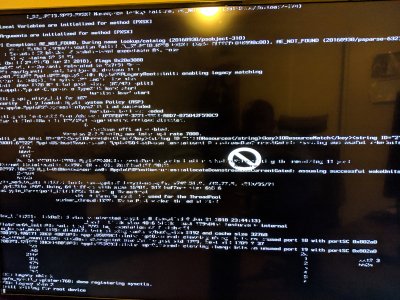Hello,
@Stork and everyone reading. I have an issue with my wifi. It doesn't connect to any of my two routers. When I put the wifi password try to connect and then give me the “this wifi need a WPA2 password” message again.
This starting to happen when I change my graphics card from a Nvidia to my new Radeon 580. That was in High Sierra. As I want it to update to Mojave I wait before trying to fix it and I got my internet by sharing with my android phone. Them I did a fresh install to Mojave 10.14.2 with MultiBeast 11.0.1. My surprise was that the problem is still there. I even bought a new wifi card. The same Fenvi card that stork use.
I have to say that when I installed Mojave I follow all the steps in the guide except for what it says in post 448 because I think this was fixed in MultiBeast 11. I’m correct? Another thing I had to do differently was enabling the iGPU Multi-Monitor option on the Bios to be able to open images with Quick look and Preview.
Things I tried to do so far:
-Fresh install of the OS
-Delete the wifi files of /Library/Preferences/SystemConfiguration/
-Factory reset and change passwords of both my routers
-Buy a new card (Fenvi FV-T919)
-Change the PCI port and the internal USB port
Apart from this, the system is working very good. If anyone has an idea of what could be the problem I appreciate the help. I give you some screenshots of my system.
View media item 191453View media item 191454View media item 191455View media item 191456

